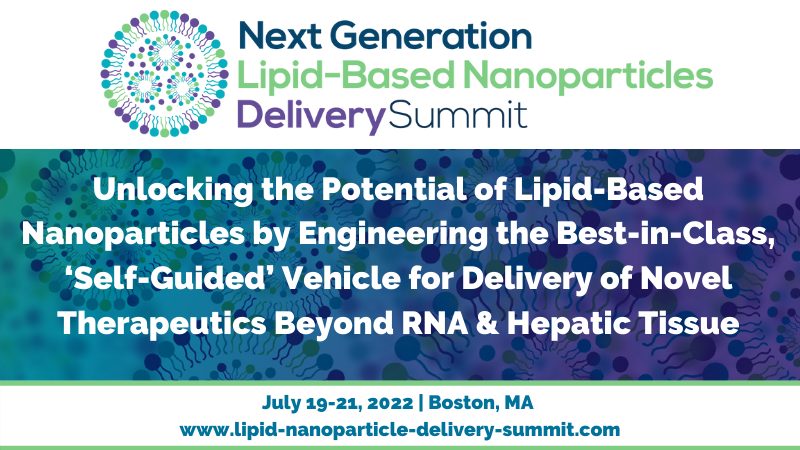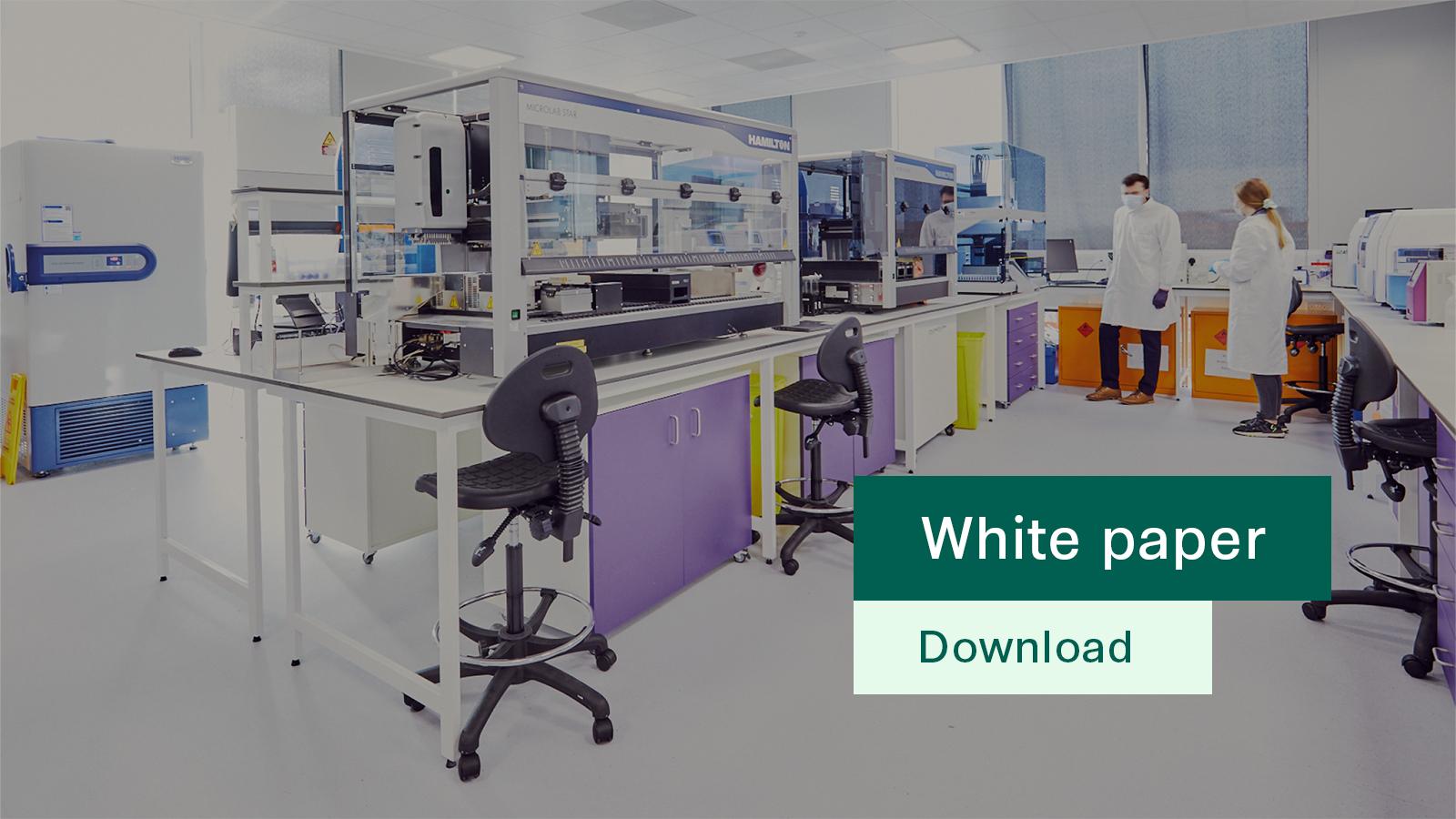LNPs: The unknown enabler behind mRNA vaccines

Drug delivery technologies are crucial to allow drugs to reach their full potential, and yet they rarely receive much spotlight. To learn more, Ben Hargreaves speaks to a biotech behind one of the delivery methods that brought mRNA vaccines to billions of people around the world.
When a drug is making its way through development and into commercialisation, the focus is often on the efficacy of the treatment, how patients stand to benefit, or how high the sales could be for the product. Less attention is paid to the way in which the drug will be delivered. For the drug developers themselves, it is crucial. For the treatment, it can make the difference on how effective the treatment is, or the potential toxicity of the treatment. At the height of the COVID-19 pandemic, when the world was still racing to develop a vaccine, one of the key parts of the puzzle was the ability of lipid nanoparticles (LNPs) to deliver mRNA vaccines.
Providing the breakthrough
The two mRNA vaccines against COVID-19, Pfizer and BioNTech’s Comirnaty and Moderna’s Spikevax, relied on lipid nanoparticle delivery systems. In the early 1970s, researchers suggested that liposomes could be used as a carrier for drug delivery, before LNPs were developed in the 1990s. The technology’s role had developed similarly to mRNA, which had been tested in the 1970s to develop therapeutics, and this accelerated in the 1990s to deliver mRNA without it becoming unstable. During the pandemic, both technologies finally came to prominence in bringing vaccines to billions of individuals worldwide.
One company that played a vital role in this, by providing the LNP delivery system for Comirnaty, was Acuitas Therapeutics. The biotech, which is based in Vancouver, Canada, works with partners to provide LNP delivery technology, and was founded in 2009. Ying Tam, the company’s chief scientific officer, explained to pharmaphorum how the technology has developed in recent years.
“The lipid nanoparticles have evolved to significantly increase potency and safety,” he said. “As an example, through the identification of new lipids and optimisation of the LNP, LNP that are used today for mRNA therapies are up to 200,000-250,000 times more active than those that were originally developed for small interfering RNA therapies. In addition, the LNP has also evolved to have improved safety characteristics, incorporating structures that allow the lipids to be degraded and excreted from the body following treatment.”
The major difference in modern LNP delivery technology is the development of highly potent, ionisable lipids that have enabled the technology to be used for nucleic acid delivery, Tam added. This has enabled LNP that allows for efficient incorporation of the mRNA into the particles, which can then take advantage of uptake pathways to be absorbed into target cells and deliver the mRNA to the appropriate intracellular location for activity.
The advantage of LNP
LNP delivery technologies have actually been developed for various medicines, including numerous small molecule treatments. For small molecule treatments, LNP systems have been used to deliver the drug because they improve the therapeutic index of the drug, which measures the ratio of dose against toxic effect, when compared to the free drug.
However, Tam outlined that the LNP delivery system developed by Acuitas differs significantly from such applications, as the company’s technology performs multiple functions. This includes protecting mRNA treatment from degradation following administration into the body, delivering the mRNA to the appropriate target cells in the body, and mediating uptake into target cells, since mRNA cannot get into target cells on its own.
Tam noted that adeno- and adeno-associated and retroviruses have been used as an alternative to deliver nucleic acid-based therapies. This type of delivery holds advantages as they are highly efficient and provide prolonged protein expression.
“They have several disadvantages, including safety concerns related to the potential to cause mutations and cancer, limitations on the size of nucleic acid that can be delivered and the high cost of clinical production. Furthermore, viral delivery systems are highly immunogenic, meaning that patients will develop antibodies against the virus and, thus, would only be able to be treated once,” Tam concluded.
In the use case for mRNA vaccines, such as during the pandemic, being only able to deliver vaccines once is far from ideal. Tam also added that LNPs have the capacity to deliver larger nucleic acids and can be produced using a scalable and cost-efficient process. This was another significant factor that made the scale up of mRNA vaccines in the face of the pandemic possible, through the scalability of LNPs.
mRNA and LNPs moving forward
According to Tam, LNPs are essential for the delivery of mRNA vaccines, and this technology could potentially become a major therapeutic modality with which to treat patients across a broad range of disease areas. The potential of mRNA vaccines in cancer is already established, but this could also be extended to autoimmune disorders and other infectious diseases. Another potential area is that of chronic or acute diseases, as well as injuries – for instance, for the treatment of acute liver injury, chronic liver fibrosis, and neural injury.
Beyond targeting conditions directly, Tam outlined how mRNA vaccines delivered by LNPs could also be used to ‘train’ the body against conditions by mediating the production of monoclonal antibodies. He explained that “these antibodies could provide almost immediate protection against infectious pathogens or treat cancer and autoimmune disease. mRNA LNP would allow the body to produce the antibodies directly, thus avoiding the need for expensive and complicated protein production and purification.”
The potential also extends into incorporating the delivery of gene editing enzymes, such as Cas9, zinc-finger proteins (ZNFs), or transcription activator-like effector nucleases (TALEN). This could enable a type of therapy that would precisely alter the DNA to permanently correct a mutated gene, introduce a functional copy of a gene, or to silence genes that are causing disease. If the promise of this technology manages to meet such expectations, the need for LNPs will likely explode in the future – though it seems likely that the delivery technology would remain the essential, but unheralded key to unlocking that potential.










.jpg?itok=nlfzPxTK)

